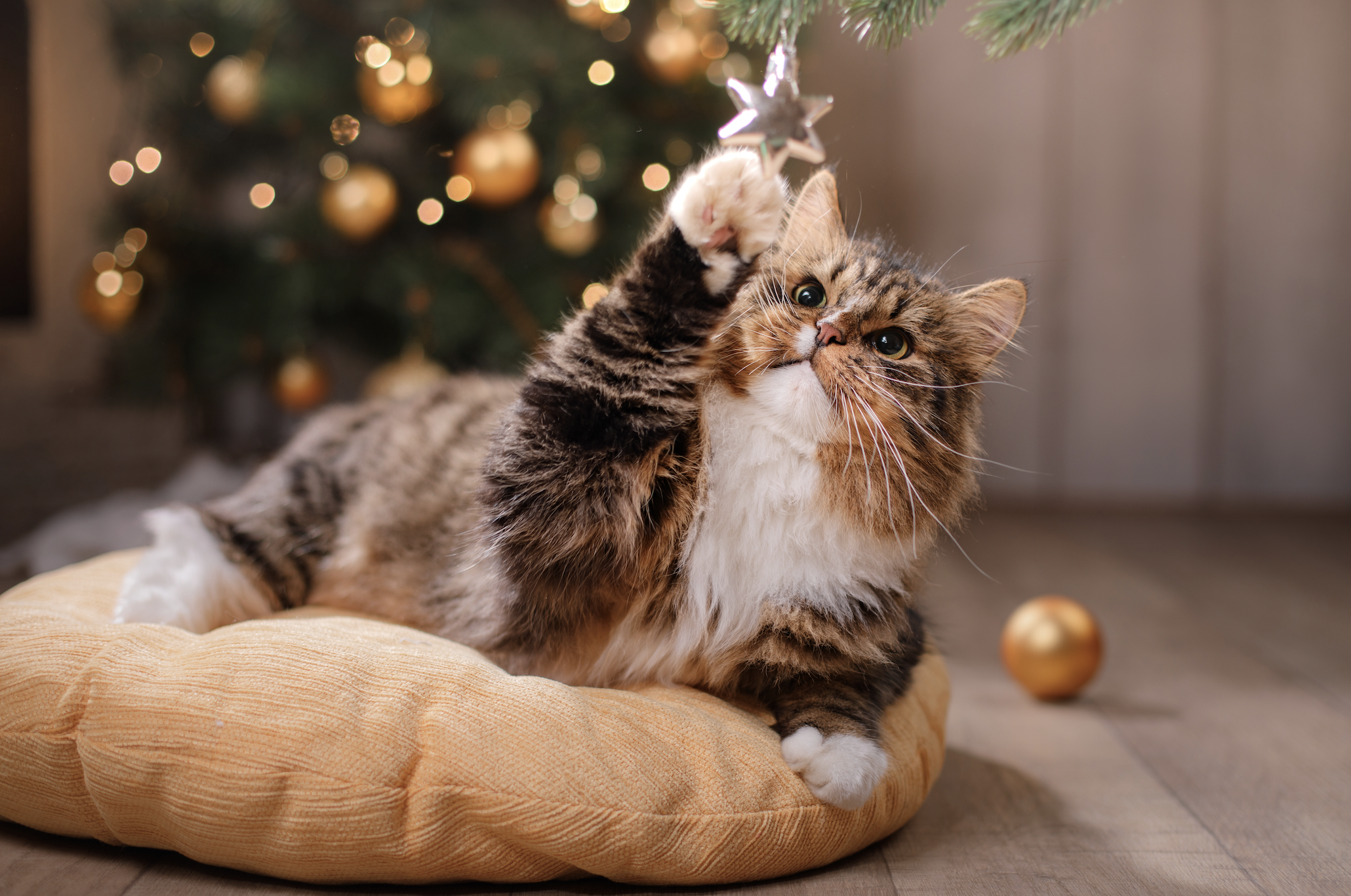
As the classic Andy Williams song lyrics go, “It’s the most wonderful time of the year.”
Yes, there will be parties for hosting. Marshmallows for toasting. Caroling out in the snow. Or, more appropriate for Greater Tampa Bay, caroling out in the sand among the palms.
The most wonderful time of the year also needs to be met with a little bit of caution when it comes to celebrating with or around pets. A recent article discussed the holiday foods that must be kept away from four-legged family members.
Ensure every member of the family has a happy, healthy and safe holiday season with these easy tips.
“Mistle-toeing”
Mistletoe and numerous other common holiday decorations should be carefully thought out when decking the halls.
Kissing a loved one under the mistletoe is a time-honored tradition, but the smooch-inspiring plant is toxic to dogs and cats. While mistletoe toxicity is rarely fatal, it is unpleasant and can lead to vomiting, diarrhea, slowed respiration and weakness. Consider artificial mistletoe instead and use it this year and for the years to come. The same goes for holly.
Poinsettias are an irritant to cats. This popular decoration is far and away the most popular holiday-related plant. The sap found in these colorful plants act as an irritant to a cat’s mouth and stomach. It is not life-threatening in most cases. Symptoms usually appear as drooling, vomiting or diarrhea.
The biggest threat coming from the plant world is the lily — which can be fatal to cats if ingested. Lilies are more common in the spring, but they can still be found in holiday bouquets and centerpieces.
“O Christmas Tree”
Just like there are many different versions of this traditional carol, there are likewise lots of different trees to choose from. Whether choosing a live tree or an artificial one, pets may not know why in the world there is a tree in the living room.
If a live tree is chosen, it needs water. Dogs may think the tree’s water is a new watering hole for them. The oils and sap that wind up in the water will not do major damage to a pet, but it can do enough to cause tummy issues. Sweep up any fallen needles regularly, as both dogs and cats seem to enjoy them.
A sturdy, appropriate size Christmas tree base is an absolute must for households with dogs and or cats. Cats love to climb trees, and dogs may view certain ornaments as toys. The base can also be supplemented by twine or good quality fishing line. Simply tie one end towards the center of the tree and use a small screw-type hook affixed to the wall.
“Deck the Halls”
Glass ornaments should be placed higher on the tree. Wagging tails can easily shatter fragile ornaments if placed too low. Owners of labrador retrievers probably learned this the hard way. Other ornaments resembling pet toys should be placed at a higher latitude as well. Owners of retrievers have experience with this one, too.
Tinsel has always been an inexpensive and popular way to dress the tree. Cats love most things that are shiny, tinsel included. Many a veterinarian has had to surgically extract tinsel from a cat’s gastrointestinal tract. Households with cats should consider avoiding using tinsel, or anything resembling tinsel altogether.
“Parties for Hosting”
When hosting friends and family, most pets love being part of the welcome wagon, especially dogs. The constant opening and closing the front door is an invitation for potential disaster.
Consider keeping crate-trained dogs in the crate or another area of the house away from the activity until all of the guests have arrived. Alternatively, keep dogs on a leash to minimize the chance they can get out into the neighborhood, or beyond. This is also a good time to verify that microchip information is current and accurate for each pet in the household.
“Over The River, Through The Woods”
Traveling with pets has become much more common in the past several years. Lots of major hotel brands have instituted pet-friendly policies.
Before hitting the road with the pets in tow, make sure to check the hotel’s policy for all the fine print. Many hotels will require an additional deposit and may have weight or size limits. Follow the hotel’s pet policies, as failure to do so could result in the cancellation of a reservation, leaving the family with no place to stay during the busiest travel season in years.
Traveling by air is a little more complicated. Every airline has their own set of rules on what types of pets may travel, and how. Some allow small pets in the cabin, while others limit the number in the cabin on any given flight. Some airlines do not accept short-snouted breeds like pugs to fly in cargo, while others do not fly pets in cargo at all. Check with the air carrier when making reservations as to the pet policy and understand any and all fees that will be imposed.
If taking animals on the plane is not an option, seek a quality boarding facility and make reservations.
By Melissa Webster, DVM, Tampa Veterinary Hospital





